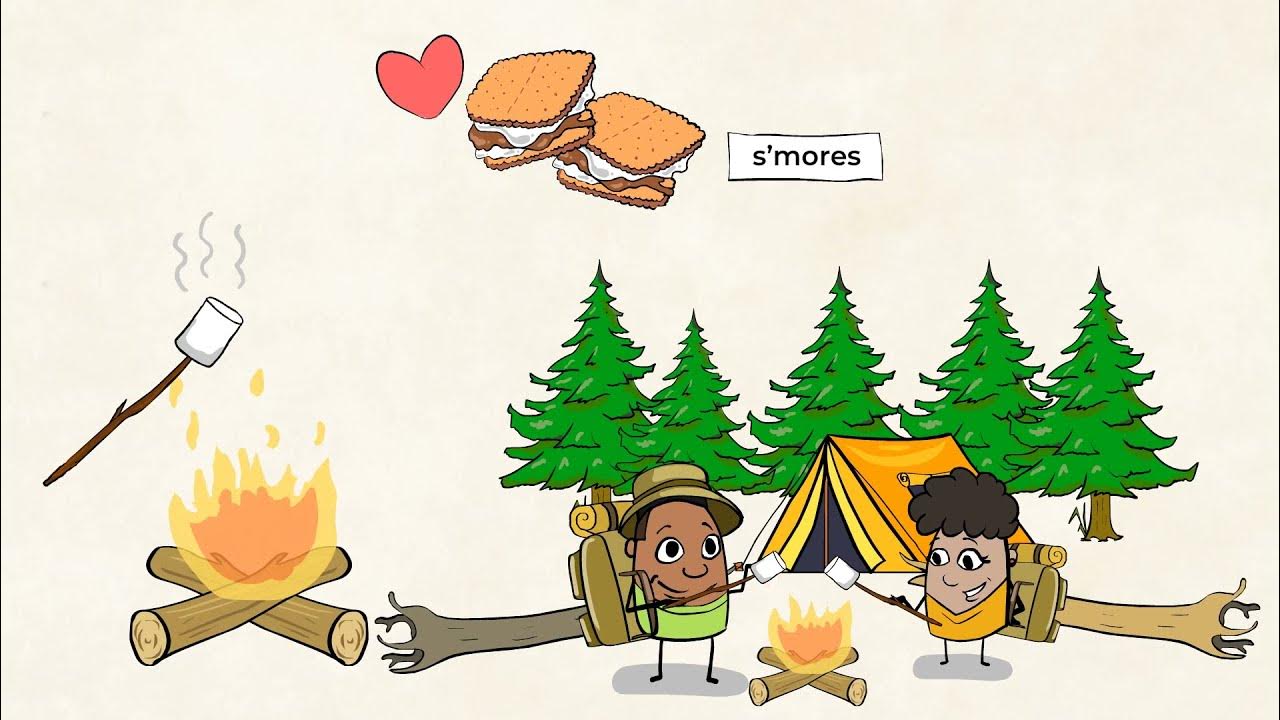What Are Reversible Reactions? | Reactions | Chemistry | FuseSchool
Summary
TLDRThis educational lesson delves into the concept of reversible reactions, contrasting them with irreversible ones like frying an egg. It explains that reversible reactions allow products to revert to their original reactants, using the thermal decomposition of ammonium chloride into ammonia and hydrogen chloride as a demonstrative example. The experiment involves heating ammonium chloride in a fume cupboard, where the gases produced turn litmus paper blue and red, indicating their presence. Upon cooling, the gases recombine to form white ammonium chloride crystals, illustrating the reversibility of the reaction. The lesson also clarifies why this decomposition is not a 'sublimation reaction,' emphasizing the importance of distinguishing between phase changes and chemical reactions.
Takeaways
- 🍳 Reversible reactions are those where the products can revert to their original reactants, unlike irreversible reactions like frying an egg.
- 🔄 The reaction arrow is used to represent reversibility, indicating that the reaction can proceed in both forward and reverse directions.
- 🌡 An example of a reversible reaction is the thermal decomposition of ammonium chloride to form ammonia and hydrogen chloride, which can recombine to form ammonium chloride again.
- 🔬 Conducting the decomposition of ammonium chloride should be done in a fume cupboard due to the corrosive nature of the gases produced.
- 📝 Red litmus paper turns blue in the presence of ammonia, and blue litmus paper turns red in the presence of hydrogen chloride, confirming the products of the reaction.
- 🔬 Upon cooling the boiling tube, white crystals of ammonium chloride reappear, demonstrating the reversibility of the reaction.
- 🧪 Ammonium chloride decomposes into ammonia and hydrogen chloride when heated, and these gases can react to reform ammonium chloride upon cooling.
- 🚫 The term 'sublimation reaction' is incorrect for the thermal decomposition of ammonium chloride because sublimation refers to a phase change, not a chemical reaction.
- 🌡 During sublimation, a solid turns directly into a gas without becoming a liquid, which is different from the decomposition process that forms new substances.
- 🔍 Solid ammonium chloride does not form gaseous ammonium chloride but decomposes into ammonia and hydrogen chloride, highlighting the difference between sublimation and decomposition.
- 📚 Understanding the distinction between reversible reactions, sublimation, and decomposition is crucial for correctly interpreting chemical processes.
Q & A
What is a reversible reaction?
-A reversible reaction is a type of chemical reaction where the products can revert or go back to their original reactants, meaning the reaction can proceed in both the forward and reverse directions.
Why is it impossible to 'unfry' an egg?
-It is impossible to 'unfry' an egg because the process of frying an egg is an irreversible reaction. Once the proteins in the egg have been denatured and the egg has been cooked, the reaction cannot be reversed to return the egg to its uncooked state.
What is an example of an irreversible reaction mentioned in the script?
-The combustion of magnesium to form magnesium oxide is an example of an irreversible reaction mentioned in the script.
What symbol represents reversibility in a chemical reaction?
-A reaction arrow with a double-headed arrow (⇌) is used to represent reversibility in a chemical reaction.
What is the thermal decomposition of ammonium chloride?
-The thermal decomposition of ammonium chloride is a reversible reaction where ammonium chloride decomposes into ammonia and hydrogen chloride when heated.
Why should the thermal decomposition of ammonium chloride be conducted in a fume cupboard?
-The thermal decomposition of ammonium chloride should be conducted in a fume cupboard because both ammonia and hydrogen chloride are corrosive gases, and the fume cupboard helps to contain and vent these gases safely.
How can you confirm the presence of ammonia in the reaction?
-The presence of ammonia can be confirmed by holding red litmus paper at the mouth of the boiling tube; if the paper turns blue, it indicates the presence of ammonia.
How can you confirm the presence of hydrogen chloride in the reaction?
-The presence of hydrogen chloride can be confirmed by using blue litmus paper; if the paper turns red, it indicates the presence of hydrogen chloride.
What do you observe near the mouth of the boiling tube after cooling?
-After removing the boiling tube from the heat and allowing it to cool, you will observe white crystals near the mouth of the tube, which are ammonium chloride crystals.
Why is the thermal decomposition of ammonium chloride sometimes incorrectly called a 'sublimation reaction'?
-The thermal decomposition of ammonium chloride is sometimes incorrectly called a 'sublimation reaction' because it involves a phase change from solid to gas. However, it is not a sublimation reaction because the substance itself changes into different products (ammonia and hydrogen chloride) rather than simply transitioning from solid to gas.
What is the balanced chemical equation for the reversible reaction of ammonium chloride?
-The balanced chemical equation for the reversible reaction of ammonium chloride is NH4Cl(s) → NH3(g) + HCl(g), with the reverse reaction being NH3(g) + HCl(g) → NH4Cl(s).
Outlines

此内容仅限付费用户访问。 请升级后访问。
立即升级Mindmap

此内容仅限付费用户访问。 请升级后访问。
立即升级Keywords

此内容仅限付费用户访问。 请升级后访问。
立即升级Highlights

此内容仅限付费用户访问。 请升级后访问。
立即升级Transcripts

此内容仅限付费用户访问。 请升级后访问。
立即升级浏览更多相关视频

Changes Are Fun! Heating and Cooling | MightyOwl Science | 2nd Grade

Chemical Reactions

How to unboil an egg - Eleanor Nelsen

11 клас. Хімія. Необоротні та оборотні хімічні реакції. Хімічна рівновага. Принцип Ле Шательє

Chemical reactions introduction | Chemistry of life | Biology | Khan Academy

6. Chemical Reactions (Part 3) (3/5) (Cambridge IGCSE Chemistry 0620 for 2023, 2024 & 2025)
5.0 / 5 (0 votes)
